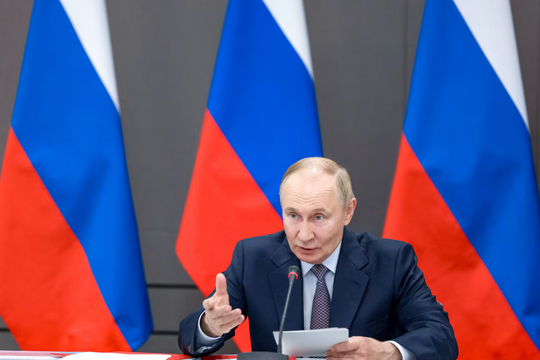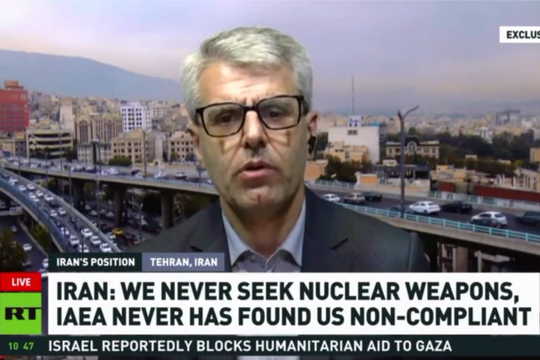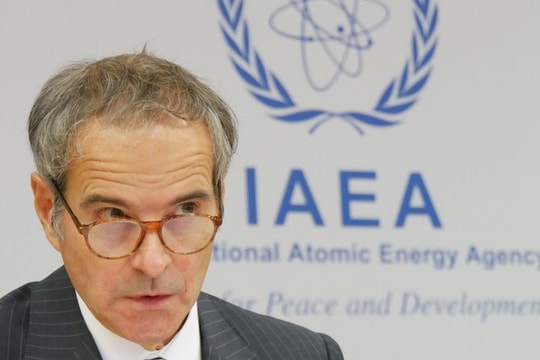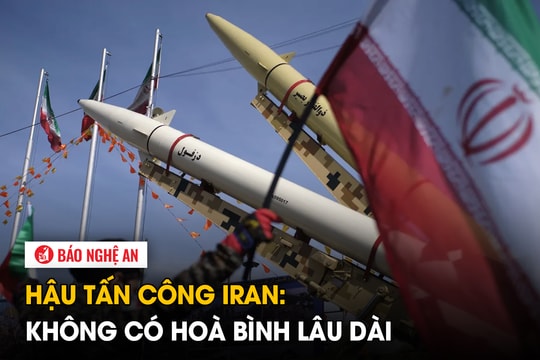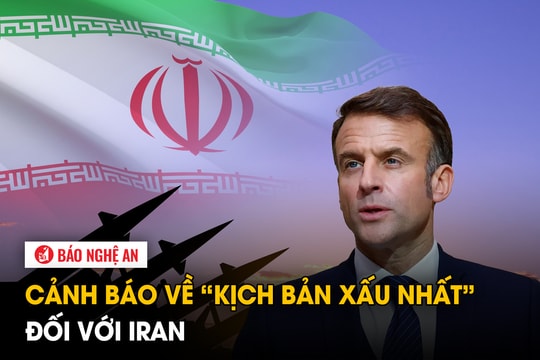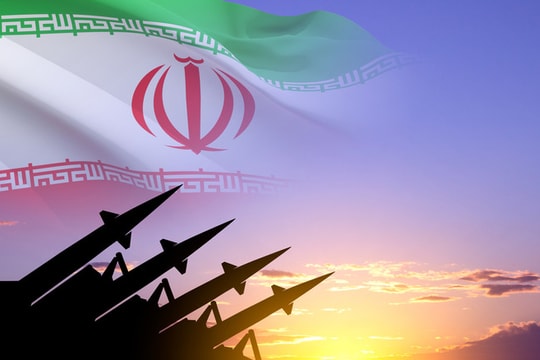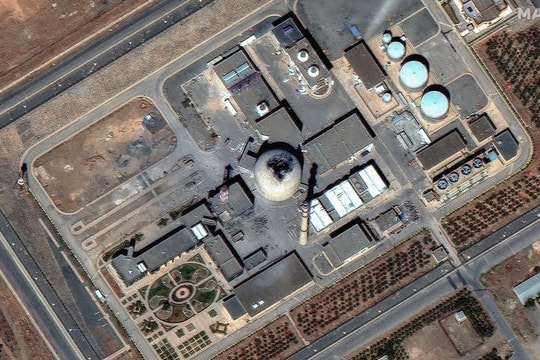The terrifying truth about nuclear weapons
(Baonghean.vn) - Witnessing the escalation of nuclear weapons worldwide, scientists have come up with a terrifying scenario for humanity and the Earth if one day nuclear war breaks out.
1. What are nuclear weapons?
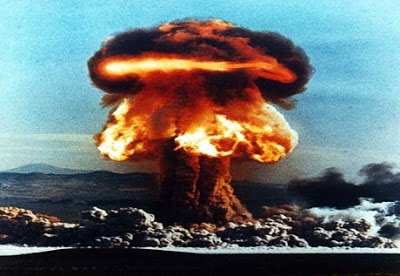 |
| Illustration photo. |
A nuclear weapon is a weapon of mass destruction whose energy comes from nuclear fission or fusion reactions. Even the smallest nuclear weapon has greater destructive power than any conventional weapon.
A nuclear weapon has the destructive power equivalent to 10 million tons of explosives, which can completely destroy a city. If the destructive power is 100 million tons, it can destroy an area with a radius of 100 - 160 km.
Up to now, only two nuclear bombs have been used in World War II: the first bomb dropped on Hiroshima (Japan) on August 6, 1945, named Little Boy, was made from uranium; the second bomb, named Fat Man, was dropped on Nagasaki (Japan) three days later, and was made from plutonium.
2. Who produces nuclear weapons?
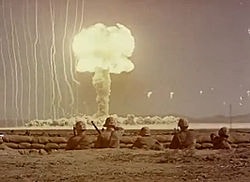 |
| Image of US military atomic bomb testing 1951-1957. |
The first nuclear weapons were developed by the United States with the help of Britain and Canada during World War II as part of the top-secret Manhattan Project. The development of nuclear weapons was initially motivated by fears that Nazi Germany might develop and use them before the Allies. But the Japanese cities of Hiroshima and Nagasaki were ultimately devastated by the first atomic bombs in 1945.
The Soviet Union also stepped up its nuclear weapons project and built and tested its first nuclear weapon in 1949. Both the United States and the Soviet Union developed thermonuclear weapons in the mid-1950s.
The invention of stable missiles in the 1960s made it possible to deliver nuclear weapons to any part of the world at short notice. The two Cold War superpowers adopted a campaign to limit the nuclear arms race in order to maintain the fragile peace of the time.
3. Power or destruction?
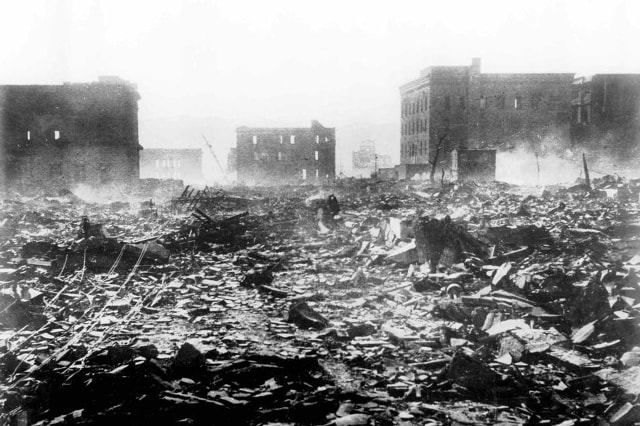 |
| The devastating bombing destroyed most of the structures of Hiroshima city, which served as a small logistics base for the Japanese army. |
Two nuclear bombs were used in the war in Hiroshima and Nagasaki (Japan) in World War II to show the world their terrible destructive power. However, nuclear stockpiles did not decrease, especially after the Cold War, the number of nuclear warheads increased rapidly.
As of 2014, there are 10 nuclear states in the world, the two most powerful are Russia and the United States with about 8,500 and 7,500 nuclear warheads. Next are the 3 powers of the UK, France and China with the same number of warheads 225, 300 and 250. And finally, the 3 new nuclear states are India, Pakistan, Iran, Israel. Although "late" about 20-30 years, but now have in stock about 100 units. In addition, North Korea owns a small number estimated at no more than 10 bombs, which are mainly primitive Plutonium bombs.
With such different potentials among nuclear states, a nuclear war, if it occurs, could have very different levels of intensity. After all, the disaster of a war, no matter how large or small, will cause huge, multifaceted and long-term consequences for humanity around the world.
4. Consequences of a nuclear war
At a small level
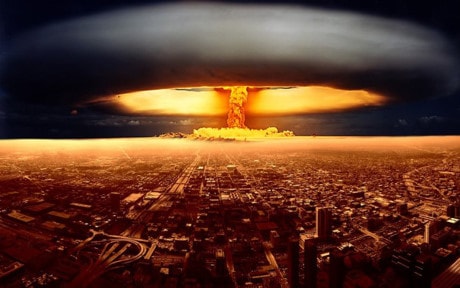 |
| The nuclear disaster would kill hundreds of millions of people instantly. Not to mention, the temperature would rise to thousands of degrees, causing fires across the region. |
Occurs in a narrow area of the country, in which each side detonates 50 small bombs (100 in total) of 15 koloton type, equivalent to the bomb in Hiroshima in 1945. The first disaster will be the mass killing of people in the area of the bomb explosion.
In the aftermath, survivors would continue to be exposed to radiation from scattered bomb fragments, leading to early death or prolonged illness and slow death.
A small-scale nuclear war would reduce the Earth's temperature by 2 to 3 degrees. Annual rainfall would also decrease by 9%. With 100 nuclear warheads exploding at the same time, 5 million tons of black carbon would be compressed into the atmosphere. It would absorb the heat from the Sun, preventing it from reaching the Earth's surface. After a while, the black carbon would fall as rain, but scientists cannot determine exactly when it will disappear from the atmosphere.
After one year, the average temperature across the Earth will have dropped by 1.1 degrees Celsius. After five years, the Earth's temperature will have dropped by 3 degrees Celsius. But 20 years later, the Earth's temperature will have risen and we will be only 1 degree Celsius colder than before nuclear war broke out.
At the comprehensive level
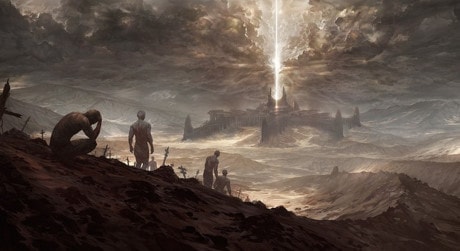 |
| This is one of the disasters that caused humanity to self-destruct. (Illustration photo). |
This level occurs when countries use large numbers of nuclear weapons to attack an entire country, including military and civilian targets. Such an attack is intended to destroy the entire economic, social, and military infrastructure of a country through overwhelming nuclear attack.
A nuclear war of this scale would likely result in the extinction of the human race or leave only a small number of survivors (those in remote areas) with a standard of living and life expectancy comparable to pre-medieval times for centuries. It would also destroy ecosystems and have a catastrophic impact on the Earth's climate.
6. Nuclear winter
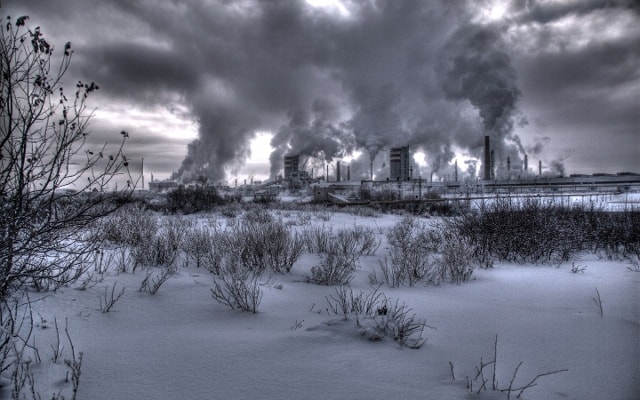 |
| Nuclear winter is a climate change event caused by hundreds, or worse, thousands of nuclear explosions worldwide if nuclear war were to occur. |
Nuclear winter is a hypothesis that American scientists put forward in the 1980s. Researchers believe that after a nuclear war, the Earth's weather and climate will be severely affected. That is, a nuclear war will cause the Earth's surface temperature to drop dramatically.
Nuclear explosions in the air will cause a large amount of dust and smoke to "travel" into the atmosphere. As a result, most of the solar radiation entering the atmosphere is absorbed by this nuclear dust and smoke layer, and the amount of sunlight reaching the Earth is significantly reduced. The sky is covered with smoke and dust and becomes dark, so trees cannot live, leading to a rapid decrease in oxygen levels and the end of life.
Obviously, a nuclear war, no matter how big or small, would have great harm and cause immeasurable death to people, not only within the scope of one or two participating countries but also have a wide impact. Even for all people around the world; without excluding any country. Therefore, as long as nuclear weapons still exist, the fear of the Apocalypse that would cause the Earth to return to prehistoric times several million years ago will always be present.
7. Other interesting facts about nuclear weapons
- Tsutomu Yamaguchi, a Japanese man who survived both bombings
– The world has more than 16 thousand nuclear weapons. But to destroy all life on Earth, 10 hydrogen bombs are more than enough.
– The effects of a nuclear test are terrible. Nuclear weapons tests have killed 120,000 people, but this terrible devastation has been kept strangely quiet.
– The bomb dropped on Nagasaki was actually intended to hit the Japanese city of Kokura, but clouds diverted the target. The bomb was dropped based on the pilot’s observation.
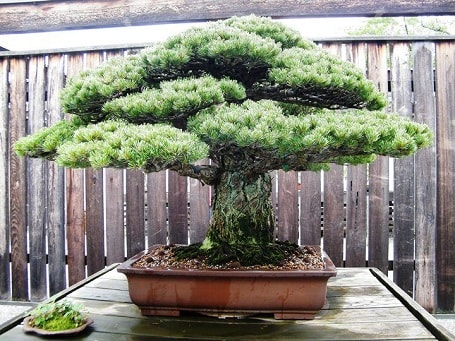 |
| The atomic bombing with its destructive power collapsed houses, caused casualties, and shocked Japan, but the tree that took root in the 17th century still stood firm, did not die, did not wither, it continued to maintain its position, continued to sprout, grow new leaves, even though it was in the area affected by the bombing. |
– A bonsai tree planted in 1626 survived the Hiroshima explosion and is now kept in a museum in the US.
– A tsunami hit the city of Hiroshima a month after the bombing and killed about 2,000 people.
– 10% of the electricity in the United States is generated from the dismantling of nuclear bombs.
– In 1962, the United States detonated a bomb 100 times more powerful than the one dropped on Japan. The bombs exploded in mid-air, 400km over the Pacific Ocean.
– Until 1988 the US government stored $2 billion at the Pony Mountain facility in case a nuclear war broke out.
– Eleven US nuclear bombs were lost and never found.
– Dr. Edward Teller, the father of the hydrogen bomb, had the idea of using it to create the Panama Canal.
– In 1961, the US Air Force accidentally dropped two nuclear bombs on North Carolina, but fortunately they did not explode.
Peace
(Synthetic)
| RELATED NEWS |
|---|

